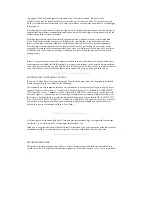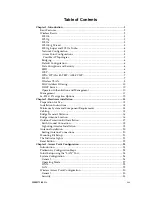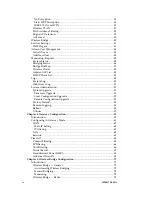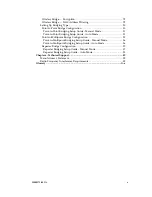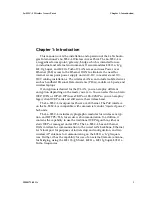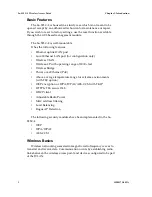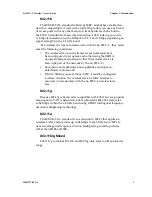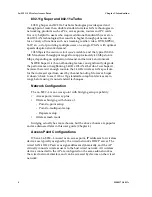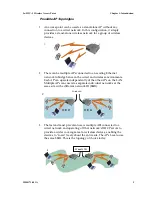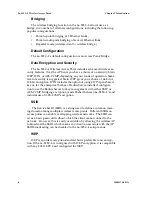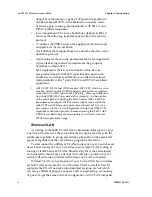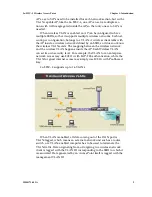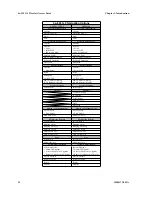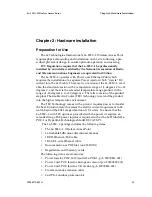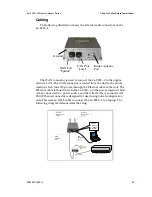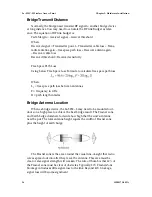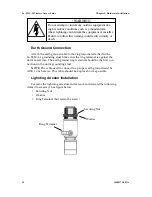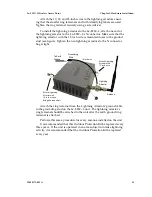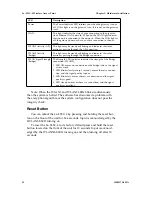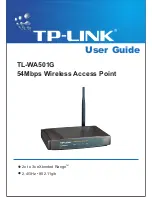
3e–525C–3 Wireless Access Point
Chapter 1: Introduction
8
29000171-001 A
3e–525C–3 Wireless Access Point
Chapter 1: Introduction
29000171-001 A
9
danger of compromise, or policy. 3eTI products implement
standards-based 802.1X with absolutely no custom modi-
fications, again ensuring interoperability with 802.11i and
WPA2 certified equipment.
• 4-way handshake: The 4-way handshake defined in 802.11i
achieves the following important goals within the security
protocol:
– it confirms the PMK between the supplicant (3e client) and
authenticator (3e Access Point)
– it establishes the temporal keys to be used by the data-confi-
dentiality protocol
– it authenticates the security parameters that were negotiated
– it provides keying material to implement the group key
handshake within 802.11i
3eTI implements the 4-way handshake within its wire-
less product line per the 802.11i specification, again with
absolutely no custom modifications, in order to maximize
interoperability with 3
rd
party 802.11i and WPA2 compliant
equipment.
•
AES CCMP: 802.11i and WPA2 employ AES CCM, which is a com-
bination of AES Counter (CTR) mode per packet data encryption,
combined with AES Cipher Block Chaining – Message Authentica-
tion Code (CBC-MAC) per packet data integrity / authentication
of the entire packet including the MAC header. AES CCMP has
been deemed to surpass the RC4 stream cipher, upon which the
older WEP and WPA security protocols are based. 3eTI was the
first company to take it’s AES algorithm through the NIST CCM
algorithm certification process, thereby ensuring that 3eTI’s AES
CCMP is standards-based, non-proprietary, and ready for wide
WPA2 interoperability usage.
Wireless VLAN
According to the IEEE, VLANs define broadcast domains in a Layer
2 network. VLANs have the same attributes as physical LANs with the
additional capability to group end stations physically to the same LAN
segment regardless of the end stations' geographical location
To interconnect two different VLANs, routers or Layer 3 switches are
used. These routers or Layer 3 switches execute inter-VLAN routing or
routing of traffic between VLANs. Broadcast traffic is then terminated
and isolated by these Layer 3 devices (for example, a router or Layer 3
switch will not route broadcast traffic from one VLAN to another).
Wireless VLAN is an extension of Layer 2 wired VLANs in wireless
LAN (WLAN) environment. As with wired VLANs, wireless VLANs
segregate the WLAN network into disjointed sections, each of which
can serve a different purpose or users, such as engineering, accounting
or guest. To get the same network configuration, with VLAN incapable



